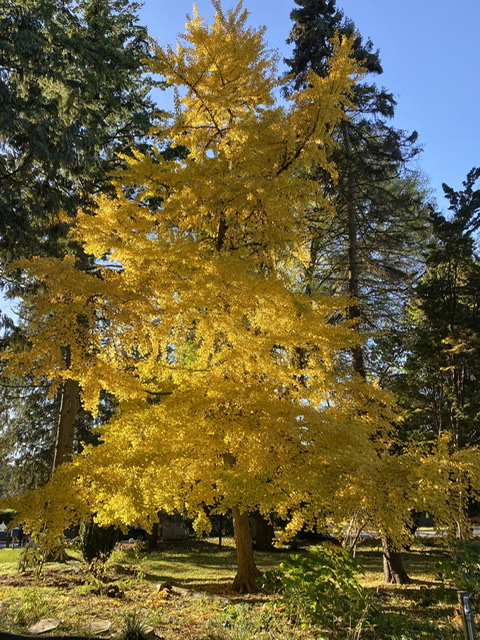The tallest Ginkgo biloba I’ve ever seen is growing in the northwest corner of Paulik Neighbourhood Park at 7620 Heather Street in Richmond. Take a look before its leaves fall overnight; that will be any day now.
This tree’s ancient heritage takes us back to China at the time of the dinosaurs. Its species name describes its two lobes. Notice the veins emerging from the stalk in the fallen leaf.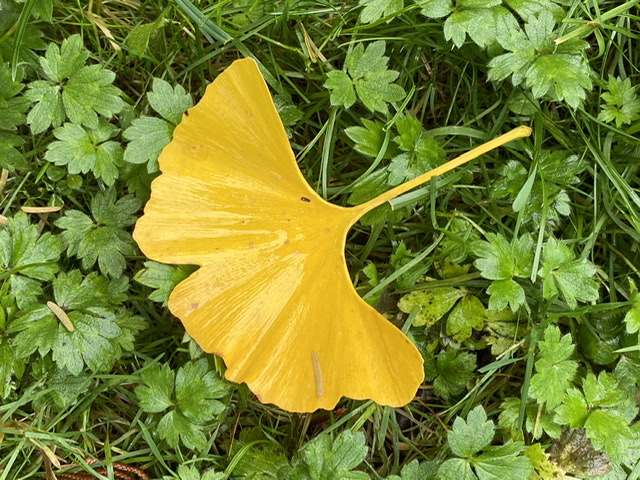
Only one of the four ginkgos I looked at in Stanley Park on November 5 had lost all its leaves. It’s the youngest, growing in the northeast portion of the Ted and Mary Greig Rhododendron Garden, near the walking path that’s west of Lost Lagoon. Perhaps it gets less sun than its older brothers and its leaves are ready to senesce sooner. (Senescence is the botanical term that describes the aging process of leaves, which always results in them eventually falling.) And the trees I looked at are all male trees—Ginkgo biloba is a dioecious species. That is, it takes two to tango, a male tree and a female tree. And the female trees are seldom planted because their fruit are pungent-smelling, or so I’m told.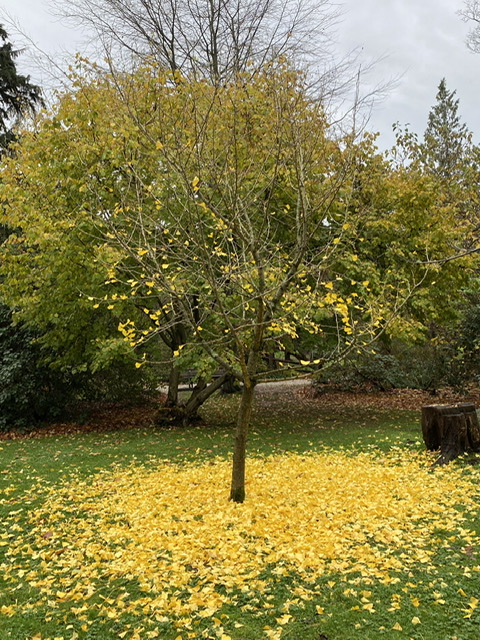
There is another ginkgo not far away on the walking path near the Ted and Mary Greig Rhododendron Garden and a much celebrated one in the Shakespeare Garden of Stanley Park, in close proximity to the Rose Garden.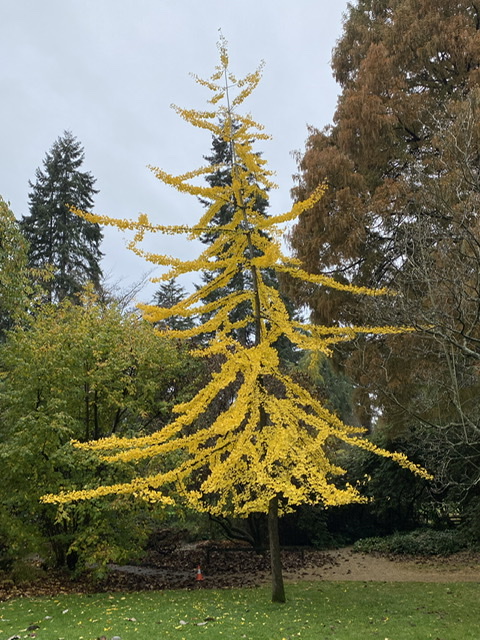
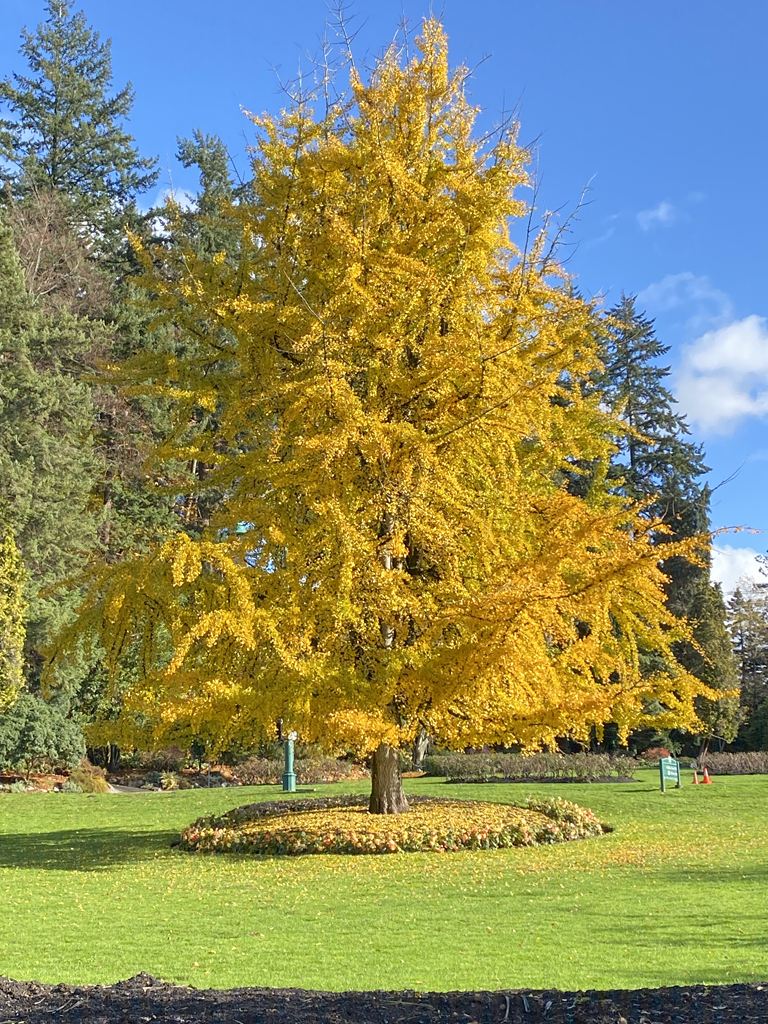
I know of one female ginkgo. She is growing near the front entrance of the Riverview Hospital in Coquitlam, perhaps a legacy from the days when those grounds were the site of the original provincial botanical garden in 1912.
Text and Photos by Nina S., Vancouver Master Gardeners
